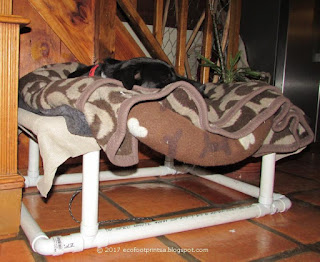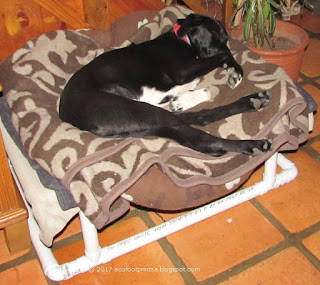I am a member of two facebook groups which try to assist people in the Western Cape, as well as the rest of South Africa, with regards to drought solutions - namely Water Shedding SA and Water Shortage South Africa. I know that most of this will be of interest to South African readers, but, perhaps everyone should be aware of, and will benefit from how to help themselves to become more self-sufficient with regards to their water - and it's storage - especially rain water. Water is our most precious comodity - more valuable than gold, diamonds, oil or anything else considered precious by mankind.
In those groups I have read so many posts from people asking who can install their rain water tanks. I think the "lack of knowledge" and cost implication (of firstly purchasing the tank, and then the additional cost of getting a company to come and do the installation / gutter link up) may be preventing people from installing a rain water tank. So I thought I would share the simplicity of it.
In those groups I have read so many posts from people asking who can install their rain water tanks. I think the "lack of knowledge" and cost implication (of firstly purchasing the tank, and then the additional cost of getting a company to come and do the installation / gutter link up) may be preventing people from installing a rain water tank. So I thought I would share the simplicity of it.
For those of you are new readers of my blog, here is some background: we live on a 2 Ha smallholding and we have installed 9 X 5 000lt tanks over the past 7 - 8 years.
As our "mains" water supply is erratic (either Overberg Water has "pump" / Escom power supply problems or farmers accidentally plough up the main line - this happens quite frequently) so we have dedicated one X 5 000 lt tank to potable water. Given the aforementioned causes of possible breaks in our potable water supply, water independence / security is therefore imperative for us - especially in the heat of summer.
 |
| Our potable water is directed from our mains pipe into the top of the potable water storage tank |
 |
| Details of water connection from pump to the house, and our power source to the pump |
 |
| A secure base is vital for a water storage tank |
 |
| Our tank / pump connection |
Two pics showing one of the two types of valves we used - in these pictures the image on the left with the handle pointing upwards, the valve is closed and in the image on the right showing the handle lying parallel to the valve, the the valve is open.
You will see two different valves in the pics - a plastic one and a metal one. Either valve can be used quite easily and is only dependent on what your hardware store stocks.
Cutting the water tank lid in order to insert the gutter downpipe can be achieved with the use of a utility / Stanley knife. Mark out the gutter profile on the lid, drill a "start" hole and cut away...
 |
| Shadecloth filter catching debris from our roof and preventing it from entering the tank |
 |
| It's easy to cut a hole in the top of the tank lid with a utility or Stanley knife |
 |
| The lid helps to keep the shadecloth in position |
 |
| Open source diagram of a first flush system |
 |
| Another first flush diagram |
 |
| I recommend a wide mouthed valve at the end of your first flush pipe to enable easy cleaning of the debris within |
Good luck 😀



















